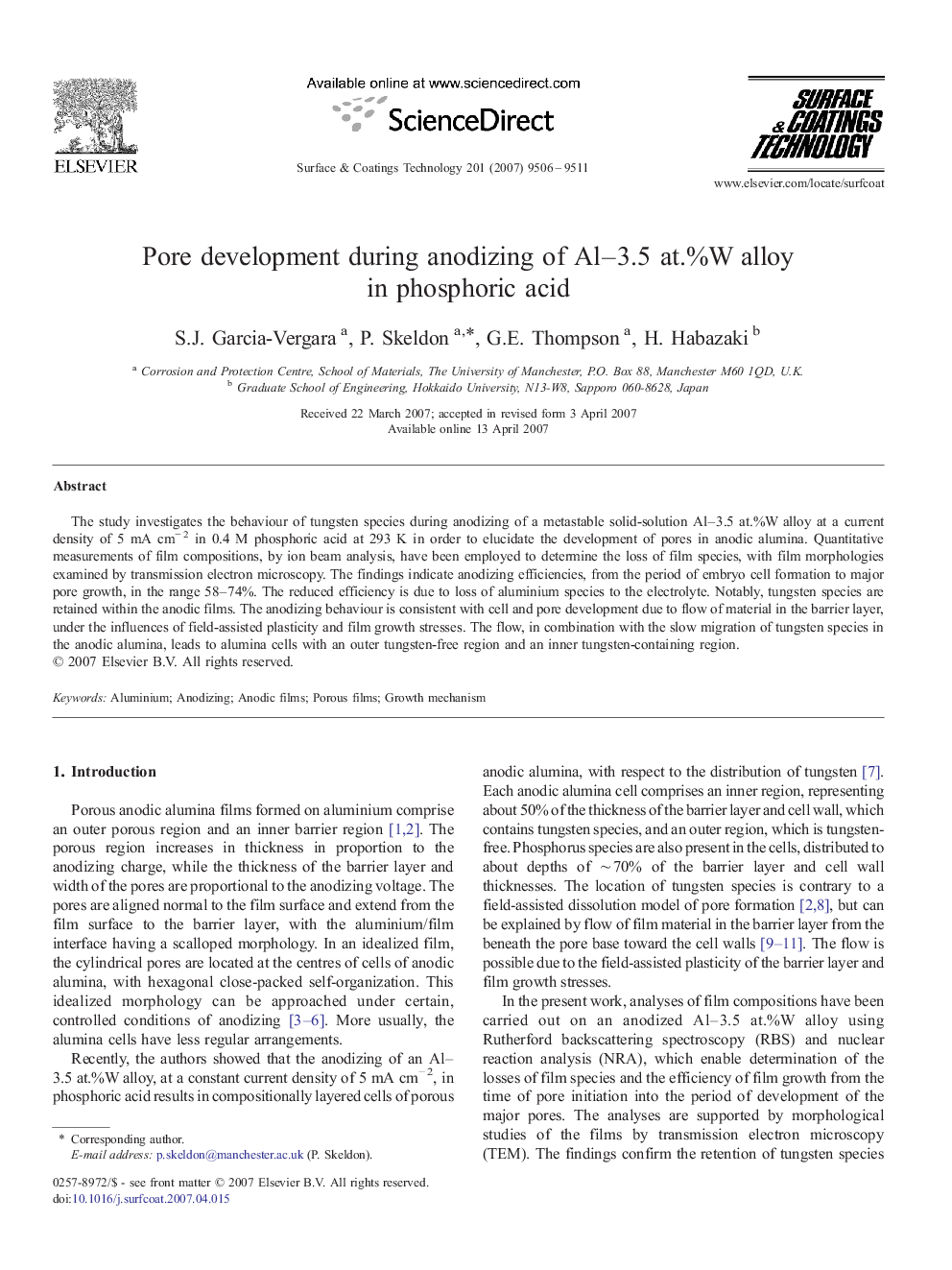| کد مقاله | کد نشریه | سال انتشار | مقاله انگلیسی | نسخه تمام متن |
|---|---|---|---|---|
| 1661988 | 1008434 | 2007 | 6 صفحه PDF | دانلود رایگان |

The study investigates the behaviour of tungsten species during anodizing of a metastable solid-solution Al–3.5 at.%W alloy at a current density of 5 mA cm− 2 in 0.4 M phosphoric acid at 293 K in order to elucidate the development of pores in anodic alumina. Quantitative measurements of film compositions, by ion beam analysis, have been employed to determine the loss of film species, with film morphologies examined by transmission electron microscopy. The findings indicate anodizing efficiencies, from the period of embryo cell formation to major pore growth, in the range 58–74%. The reduced efficiency is due to loss of aluminium species to the electrolyte. Notably, tungsten species are retained within the anodic films. The anodizing behaviour is consistent with cell and pore development due to flow of material in the barrier layer, under the influences of field-assisted plasticity and film growth stresses. The flow, in combination with the slow migration of tungsten species in the anodic alumina, leads to alumina cells with an outer tungsten-free region and an inner tungsten-containing region.
Journal: Surface and Coatings Technology - Volume 201, Issue 24, 15 October 2007, Pages 9506–9511